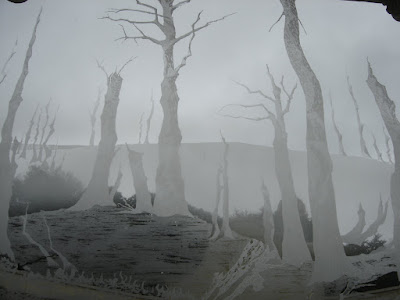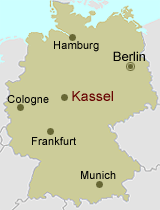


http://www.ww1battlefields.co.uk/somme/delville.html
http://modern-war.suite101.com/article.cfm/ghosts_of_delville_wood_france






Arts news, exhibitions, events, biennials and conferences, calls, resources and opportunities, technical information, exhibitions and reviews. London Edition.

"Despite occasional bright spots, this documenta leaves a rather weak impression – because of the diverse theoretical ambitions that are not fulfilled and in part because of major curatorial weaknesses. These are especially obvious in the wretched Aue Pavilion (see our tour). This twelfth edition in no way fulfills the claim, found again in the official statements, that the documenta is “an authoritative worldwide seismograph of contemporary art”."Website: www.documenta12.de



http://www.art-ww1.com/gb/index2.html
http://www.art-ww1.com/gb/visite.html
The aim of this exhibition is not to review the facts of the war, but to show how they were portrayed by artists on either side of the front line, and indicating the difficulties involved. Amongst the millions of conscripts there were painters of every nationality and every school of painting. Those who were born around the year 1880 belonged to the generation that was called up immediately on the outbreak of war. The war held no secrets for men such as these – they were the ones who did the fighting. Boccioni, Macke, Marc, La Fresnaye and Gaudier-Brzeska died during, or as a consequence of, the war. Only the citizens of neutral countries (for example the Spanish nationals Picasso and Gris) were not called up. Many enlisted out of patriotism or because they could not bear to be away from the action. Until now, with very few exceptions, artists and writers had witnessed wars without actually becoming involved. In 1914, for the first time, they all had to take part: Germans, Britons, Italians, Austro-Hungarians and Frenchmen. Léger became a stretcher-bearer, Kokoschka a cavalryman, Beckmann a medic, Derain an artilleryman, Camoin a camoufleur, Dix a machine-gunner. Many of them drew and painted what they saw and lived through. From the sketchbooks of pencil drawings done at the front to the canvases painted on returning home, theirs is an intense and accurate testimony.

And yet, many of these works have been little researched, if not altogether forgotten. Because they recalled painful memories they were not much looked at once the war was over. Even the men who painted them - with the crucial exception of Otto Dix - had grown away from their work, and made no attempt to exhibit them. For example, Beckmann and Léger were no sooner demobbed than they set to work painting very different subjects, such as contemporary life and the city. Others went even further in making a fresh start. Among those who were called up were Braque and Derain, who left Avignon station together on August 2nd 1914 to join their regiments, accompanied by Picasso. Braque took part in the fighting during that autumn and winter. He was seriously wounded on May 11th 1915, was trepanned and, after a long convalescence, returned to his workshop a year later. He left not a single drawing or canvas alluding to what he had been through and no representation of the war is present in his work. Derain was attached to an artillery unit and served in the Champagne region, at Verdun, on the Somme, and on the Chemin des Dames until 1917. He was not demobilised until after the armistice. Of this five year period there remains no trace, apart from the title of one painting, the Cabaret on the Front seen by André Breton in Derain's studio in 1921, but which disappeared and was probably destroyed. Kirchner, Schmidt-Rottluff and Kokoschka also refrained from painting what they had seen and experienced.
Making a Palm Press
Concept behind the Palm Press
Rubbing the back of a sheet of paper pressed to an inked surface has been used for centuries, but the Japanese have carried the technique to great heights in their woodcut prints by using a baren made from a bamboo leaf over a braided core. Wooden spoons and other items have been used by contemporary block printers to print their editions, but the Japanese baren is still the preferred choice of printing small woodcuts. It has been duplicated in plastic and assembly of metal balls, but the traditional bamboo baren cannot be beaten for delicacy in printing. Unfortunately this tool cannot produce enough pressure for any printing any media other than woodcuts. The Japanese technique of using thin waterleaf paper and waterbased ink allows for a softer gentler application of pressure to give complete control of transfer of ink to paper.
........
Using this innovation
My practice is not to patent any of my developments, but make them available to the printmaking community free of charge. By putting this innovation into public domain, I, nor anyone else can now patent the palm press. My daughter Sasha disclosed the palm press at the Southern Graphic Council conference in Miami in March of 2000. She demonstrated how it could be used in a high school art classes as another printmaking media. By using water-soluble ink and recycling of plates, waterless lithography's more direct approach to image making can have a major impact in teaching art.